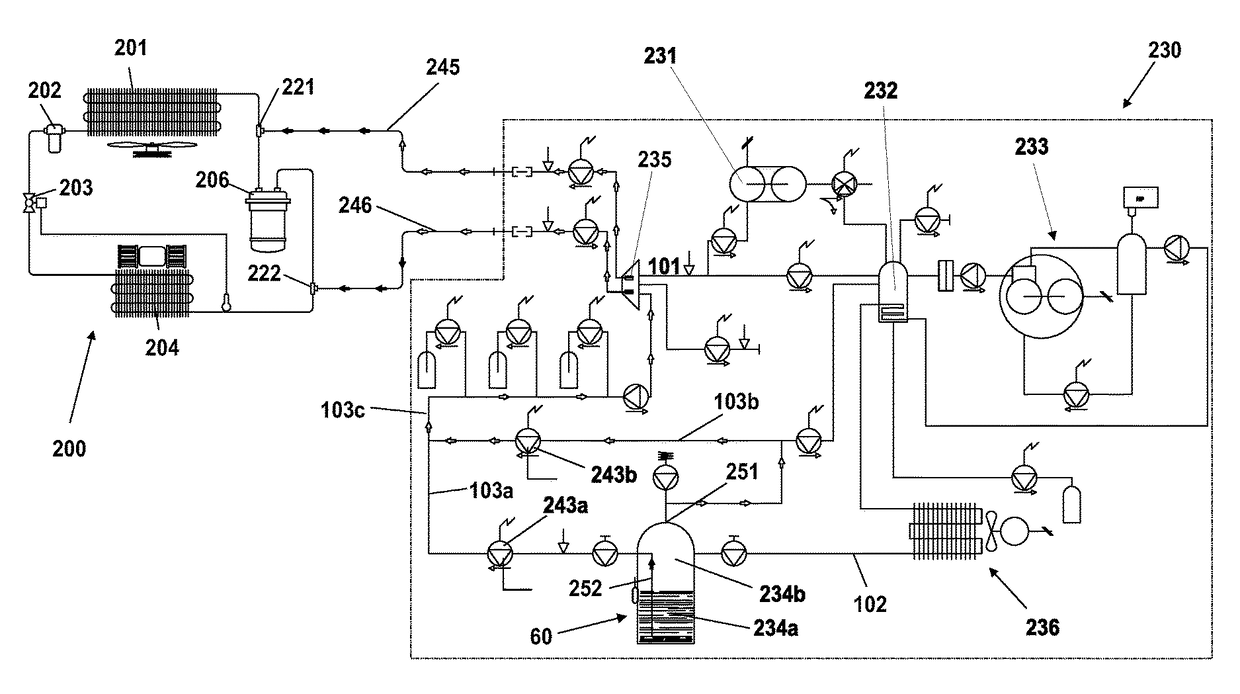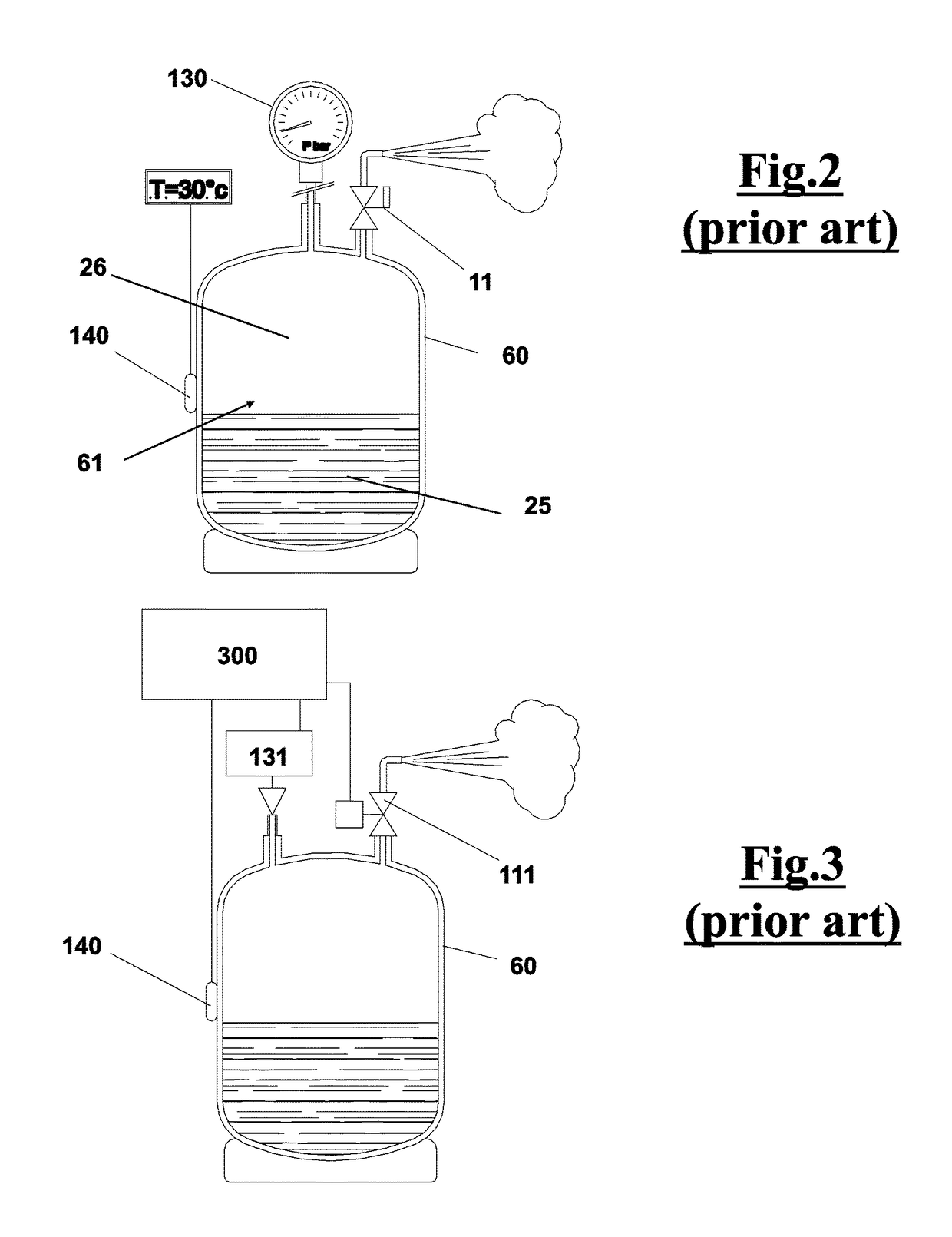Apparatus and method for recovering and regenerating a refrigerant from an A/C plant
a technology of apparatus and refrigerant, which is applied in the field of apparatus and method for recovering and regenerating refrigerant from an a/c plant, can solve the problems of unavoidable loss of refrigerant in vapour phase, serious damage to things or people, environmental damage,
- Summary
- Abstract
- Description
- Claims
- Application Information
AI Technical Summary
Benefits of technology
Problems solved by technology
Method used
Image
Examples
Embodiment Construction
[0091]With reference to FIG. 1, an apparatus 230 is shown, according to the prior art, which is adapted to recover the refrigerant from an air conditioning system 200 by connection means as flexible ducts 245, 246 respectively connected to high pressure connector 221 and low pressure connector 222 of the air conditioning system 200. The latter comprises, as well known, a condenser 201, a filter 202, a calibrated hole 203, an evaporator 204, a storage container 205 and a compressor 206. The operation of recovering the refrigerant, through the ducts 245 and 246, is carried out mainly in liquid phase by the high pressure connector 221 and in gaseous phase by the low pressure connector 222.
[0092]Owing to the work of machine 230, the refrigerant by suction through ducts 245 and 246 reaches, via a collector 235 and a feeding duct 101, a purification unit 230a, comprising an evaporator 232, a compressor 233 and a condenser 236. Then, the refrigerant condensed and purified after the regener...
PUM
 Login to View More
Login to View More Abstract
Description
Claims
Application Information
 Login to View More
Login to View More - R&D
- Intellectual Property
- Life Sciences
- Materials
- Tech Scout
- Unparalleled Data Quality
- Higher Quality Content
- 60% Fewer Hallucinations
Browse by: Latest US Patents, China's latest patents, Technical Efficacy Thesaurus, Application Domain, Technology Topic, Popular Technical Reports.
© 2025 PatSnap. All rights reserved.Legal|Privacy policy|Modern Slavery Act Transparency Statement|Sitemap|About US| Contact US: help@patsnap.com



